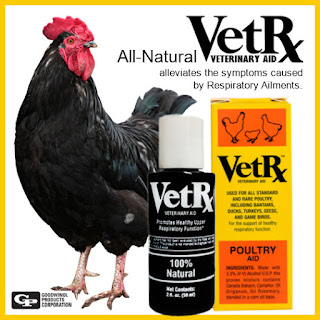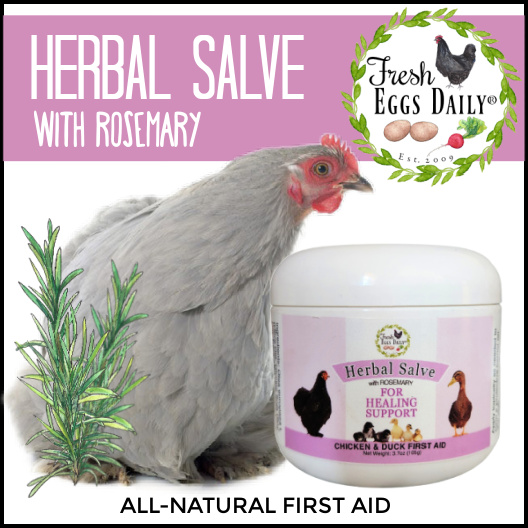How to Make Homemade Electrolytes for Chickens
Having some electrolytes on hand in your chicken first aid kit is always a good idea.
Administered in cases of heat exhaustion, injury, stress or dehydration, electrolytes could be the difference between life and death for an ailing hen or baby chick.
If you live in an extremely hot climate, or often have chicks shipped through the mail, it's a good idea to mix up a batch of the dry ingredients to always keep on hand.
You can use plain Pedialyte and add it to your chickens' water during a heatwave, but I like having the electrolytes in a powder form that I can measure out and add to my flock's water as needed.
Homemade Electrolytes for Chickens
Electrolytes are very important to proper body function in animals and people. Electrolytes replace sodium, potassium and other minerals in the body lost due to stress, overheating or dehydration.
They also rehydrate and rebalance the body's pH levels (acidity) which are extremely important for proper body functions.
Much like an athlete will drink Gatorade after a race, or a baby will be given Pedialyte for vomiting or diarrhea, sometimes chickens need a little boost and some rebalancing.
When to Use Electrolytes for Chickens
Electrolytes can be beneficial to chicks and chickens in these situations:
- in cases of heat exhaustion
- for chicks suffering from shipping/travel stress or weak chicks
- to aid with stress from a predator attack
- when treating an injury
- in cases of diarrhea
- birds suffering from another health issue
- to aid a sick bird without much appetite
The recipe below is pretty standard and a good one to bookmark for an emergency, although I definitely recommend mixing up a batch and keeping it with your chicken first aid kit - just in case.
Then you can just measure out the powder as needed to add to your chickens' water.
What are the Ingredients in Homemade Electrolytes?
A basic electrolyte recipe calls for just four ingredients: sugar, salt, baking soda and potassium chloride.
(Although you can omit the potassium chloride in the recipe if you don't have it or can't find it, it's very important to follow the rest of the recipe as written.)
Some additional notes:
- Be sure you use sea salt versus regular table salt. Table salt doesn't have the high levels of trace minerals, namely potassium and calcium, that sea salt does. Sea salt is a source of potassium chloride which provides the essential potassium to the body.
- You can use honey instead of white granulated sugar, but don't mix that in with the dry ingredients. Mix the honey in when you add the water.
- You can mix the powder up in advance and keep a container in a cool, dry spot and then mix it into water as needed. Once you mix up the electrolytes, discard any not used that day.
Why is There Sugar in Homemade Electrolytes?
The sugar in the mixture helps to boost energy during a heatwave and also increases the nutrient absorption from the other ingredients.
Why is There Salt in Homemade Electrolytes?
The sea salt in the mixture causes the body to retain fluid which can help prevent dehydration.
Why is There Baking Soda in Homemade Electrolytes?
The baking soda (sodium bicarbonate) is the electrolyte in the mixture. Electrolytes are the essential minerals in our body that allow it to function properly and include calcium, potassium, and sodium.
Why are Electrolytes Important?
Electrolytes perform various functions in the body including |
- Balancing the body's pH levels
- Balancing the body's fluid levels
- Allow the body's muscles to work properly
- Allow the heart to perform properly
- Move nutrients into the cells in the body
- Move waste out of the body
How to Make Homemade Electrolytes for Chickens
Stir or whisk the dry ingredients in a small container with a lid. ( If you don't have the potassium chloride, you can just omit it.)
Store in a cool, dry place until needed.
How to Use Homemade Electrolytes
To use your homemade electrolyte powder, measure out 6 teaspoons of the mixture into a gallon of water (or add 1.5 teaspoon to a quart of water).
Offer to chicks or adult chickens for several hours as their sole water source and then offer plain water for several hours. Repeat until symptoms subside.
In an Emergency Situation
In extreme cases, a stronger version of 2 teaspoons may be stirred into one cup of water and administered by the mouth with an eyedropper a few drops at a time.
Signs that electrolytes are needed include |
- Lethargy
- Dizziness
- Confusion
- Vomiting
- Fast heart rate
- Shock
Only use electrolytes when needed in cases of emergency. Regular use of electrolytes can be dangerous and result in an electrolyte overload and imbalance.
How to Store Homemade Electrolytes
Discard any unused liquid solution at the end of each day. Dried mixture can be stored in a cool, dry place almost indefinitely.
Homemade Electrolyte Ice Cubes
Now that you've made the electrolytes, did you know that you can mix them into some water and make electrolyte ice cubes to add to your flock's water?
Read this article for the how-to.




























